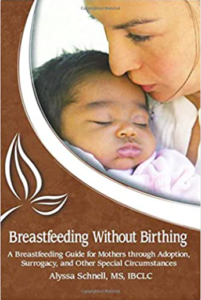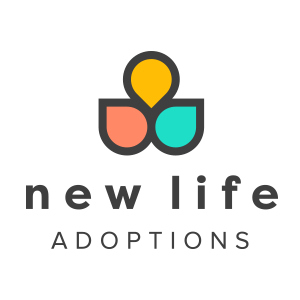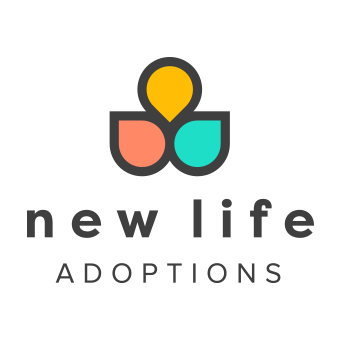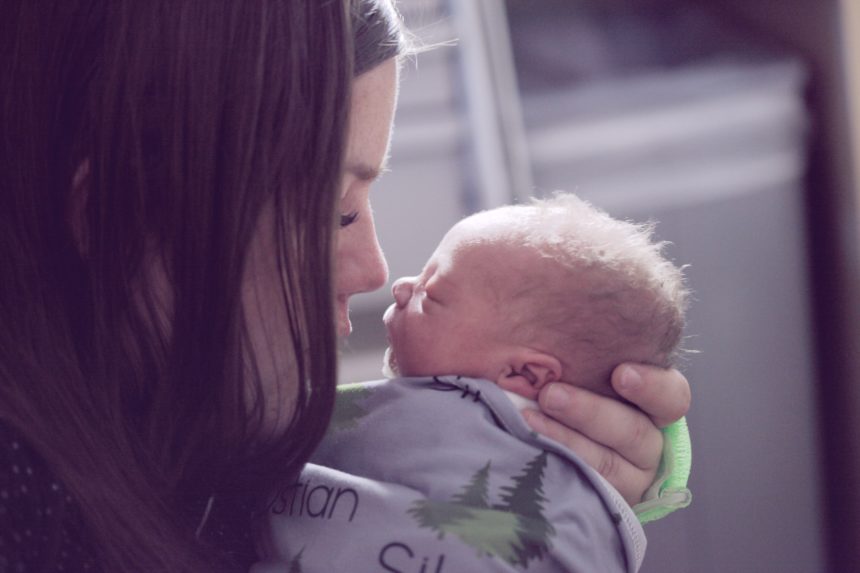Mothering success is not measured in ounces—or drops—of milk that flow from breast to mouth. It’s measured in the love that flows between mother and baby (Cassar-Uhl, 2012)
On the journey of adoption there are many losses experienced by those involved. One of these losses for adoptive mothers is not getting to experience the pregnancy, birth, and breastfeeding of her child. While these can all be experienced through embryo adoption, a typical domestic infant adoption does not include any of these. However, many people are not aware that choosing to breastfeed your adopted child IS an option—it can and has been done.
Breastfeeding an adopted child (whether the mother produces milk or not) promotes bonding and attaching between the infant and the adoptive mother. The Adoption Network shares that it can even be done “if the woman has never been pregnant, given birth, or breastfed before” (Granillo).
However, many people are not aware that choosing to breastfeed your adopted child IS an option—it can and has been done.
There is more to breastfeeding than just providing nutrients for your child. Breastfeeding can help promote bonding and attachment for new mothers, whether they gave birth to their child or not. “Many mothers are happy to be able to breastfeed without expecting to produce all the milk the baby will need. It is the special relationship, the special closeness, and the emotional attachment of breastfeeding that many mothers are looking for” (Goldfarb).
Adoptive moms who are interested in breastfeeding their adopted child should prepare before the placement by talking to their doctor and/or a lactation consultant. Some medical professionals are not familiar with inducing lactation, especially in an adoption, so it may be necessary to “shop around” to find a doctor or lactation consultant that will work with you. Some doctors may prescribe Estrogen or Domperidone to help induce lactation; however, starting to pump multiple times per day with a hospital grade, double breast pump can also help induce lactation.*
Breastfeeding can help promote bonding and attachment for new mothers, whether they gave birth to their child or not.
Choosing to breastfeed your adopted child can be tricky as many placements can happen without time to prepare. However, educating yourself during the home study and wait time can help you be ready to start the process as soon as you know there may be a placement. Some adoptive moms may even choose to start this process before they know of a potential placement. It can be important to talk through the pros and cons of starting early with your husband and your social worker keeping in mind that some families wait longer than others. It is important to find the balance between being prepared and potentially making the wait more difficult.
Many professionals suggest starting the process of breastfeeding your adopted child as soon as possible in the hospital. However, at New Life Adoptions, we request that families interested in breastfeeding their adopted child wait until after bringing the child home from the hospital to start breastfeeding. The hospital time is the birth parents’ time with the baby. Beginning the process of breastfeeding is very time consuming and we don’t want to take away from the birth parents time with the baby. Also, in some cases the birth mother may choose to breastfeed the baby during the hospital time. In an effort to avoid any confusion for the baby, we ask our adoptive mothers to start the breastfeeding process with the baby after bringing him/her home from the hospital.
At New Life Adoptions, we request that families interested in breastfeeding their adopted child wait until after bringing the child home from the hospital to start breastfeeding. The hospital time is the birth parents’ time with the baby.
Typically, adoptive moms are not able to produce 100% of the milk their child will need, so they may need to supplement with donated breastmilk or formula. There are different tools that you can use to help supplement while breastfeeding. Some moms choose to use something called a supplemental nursing system (SNS). “The SNS allows expressed breast milk, donor milk, or formula to be fed through a thin silicone feeding tube that is taped to the nipple, providing baby with the sensation of feeding from the breast, and sucking stimulation to help build your supply” (Induced Lactation and Adoptive Breastfeeding).
Many people wonder if there is a difference between the breast milk of an adoptive mother and that of a biological mother. Alyssa Schnell, MS, IBCLC, shares in her Women’s Health Today article that “human milk contains over 200 components especially designed to meet the needs of infants. In a study of two mothers who induced lactation, both produced milk similar in composition to that of mothers who had birthed their babies” (Kulski, Hartmann, Saint, Giles, & Gutteridge, 1981). Schnell goes on to share that “whether or not you reach full milk production, your milk contains the same number of antibodies and other immune factors as that of mothers who birth and exclusively breastfeed their babies” (Wiessinger, West & Pitman, 2010) (Breastfeeding Without Birthing: Making Milk). Breastfeeding can be a huge benefit to your baby, but rather than having expectations of producing a certain amount of milk or being able to fully meet your child’s nutritional needs, it can be helpful to focus on the benefits of bonding and attachment between you and your child.
…rather than having expectations of producing a certain amount of milk or being able to fully meet your child’s nutritional needs, it can be helpful to focus on the benefits of bonding and attachment between you and your child.
If you are interested in inducing lactation to breastfeed your adopted child it is important to educate yourself, find a medical professional who can help you and support you, seek out other women who have breastfed their adopted child, and find friends or family members who can support you and cheer you on throughout your journey.
*We are not medical professionals and we cannot give medical advice. Please contact a medical professional to find out if breastfeeding your adopted child is right for you.
Please note, New Life Adoptions does not endorse all viewpoints expressed in the following resources and references.
Resources

- Breastfeeding Without Birthing: A Breastfeeding Guide for Mothers through Adoption, Surrogacy, and other special Circumstances by Alyssa Schnell, MS, IBCLC
- LeLeche League
- Adoptive Families’ Article: “Nursing Matthew” (Please note that Adoptive Families requires a subscription to access their articles.)
- The Newman-Goldfarb Protocols
References
Cassar-Uhl, D. (2012). “Yes, you can breastfeed!” Supporting mothers with mammary hypoplasia/insufficient glandular tissue as a lactation consultant in private practice. Lactation Consultant in Private Practice Workshop. Philadelphia.
Granillo, Jason. “Ask the Adoption Coach: Breastfeeding Your Adopted Child.” Adoption Network, Adoption Network Law Center, 6 Feb. 2019, adoptionnetwork.com/blog/ask-the-adoption-coach-breastfeeding-your-adopted-child.
Goldfarb, Lenore. “Breastfeeding Your Adopted Baby or Baby Born by Surrogate/Gestational Carrier.” Ask Lenore ~ Breastfeeding: Breastfeeding Your Adopted Baby or Baby Born by Surrogate/Gestational Carrier, www.asklenore.info/breastfeeding/induced_lactation/adoptive_breastfeeding.shtml.
“Induced Lactation and Adoptive Breastfeeding.” Medela, 16 Dec. 2019, www.medela.us/breastfeeding/articles/induced-lactation-and-adoptive-breastfeeding.
Schnell, Alyssa. “Breastfeeding Without Birthing: Making Milk.” Women’s Health Today, 25 Sept. 2017, womenshealthtoday.blog/2017/09/22/breastfeeding-without-birthing-making-milk/.




